The Haunting Power of Curses Through History
This page contains sensitive content. Reader discretion is advised.
Friends,
Curses have haunted humanity since the dawn of civilization, their terrible power first unleashed by ancient Sumerians who etched vengeful warnings into clay tablets and Egyptians who promised horrific deaths to tomb raiders—their hieroglyphs promising that demons would devour violators’ hearts. Even the Book of Genesis trembles with divine wrath, condemning mankind to suffer through childbirth, to battle thorns and thistles, and ultimately to return to dust—perhaps the most devastating curse ever pronounced.
Curses have ripped through the fabric of urban tales and folklore’s as weapons of vengeance, shields against evil, and harbingers of doom, erupting in countless manifestations across civilizations—from whispered maledictions that shatter lives to blood-soaked rituals performed under moonless skies, from hexes that haunt generations to legendary imprecations that toppled empires and brought gods to their knees.
But do curses really exist? Or are they a figment of our imagination?
A Tale as Old As TimeResearchers, headed by Alexander Hollann of the University of Washington, have discovered that a humble grocery seller- not royalty or nobility-was the target of a blistering curse etched into a slender plate of lead nearly two thousand years ago in during the Ancient Roman Empire.
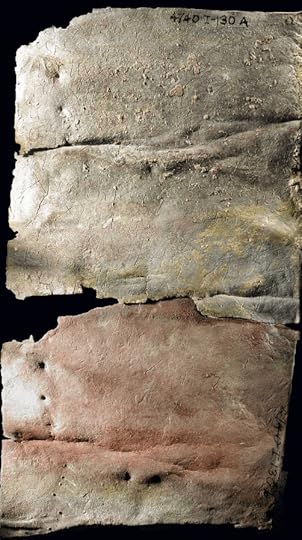 Image credit: Photo courtesy Professor Alexander Hollmann
Image credit: Photo courtesy Professor Alexander HollmannThe inscribed curse tablet had been cast into a well in Antioch-at that time among the largest eastern metropolises of the Roman Empire, located in what is now Turkey’s southeaster region along the Syrian border.
Invoking Iao- the Greek name for Yahweh from the Old Testament- the inscription demands divine punishment for a greengrocer named Babylas. Ensuring that the right person was targeted, the tablet also identifies the man’s mother as Dionysia, ‘also known as Hesykhia.’
The cursed tablet, currently housed at Princeton University Art Museum, remained only partially deciphered since its excavation in the 1930s. Scholars completed a full translation, a detailed translation found in a issue of Zeitschrift für Papyrologie und Epigraphik, a journal specializing in ancient written material.
Translation of CurseSide A: Translation and Commentary
O thunder- and lightning-hurling Iao, strike, bind, bind together Babylas, the greengrocer, whom the polluted womb Dionysia, also called Hesykhia, gave birth to and who lives in the neighborhood of the Mygdonites. As you struck the chariot of Pharaoh, so strike his [Babylas’] of-fensiveness. O thunder- and lightning-hurling Iao, as you cut down the firstborn of Egypt, cut down his [livestock?] as much as… now, and bind, bind down, bind together, lay out, twist, let them be broken, let them not be able to move, the livestock of Babylas himself all the time from this hour and from this day, now, now, quickly, quickly, fill with evil fortune an this same Babylas the greengrocer, who Hesykhia gave birth to!
Side B: Translation and Commentary
I adjure you (pl.) on account of the lawless and impious Babylas the greengrocer: just you drown and will chill [this tablet] in the disused well, so too drown and chill the soul of Babylas, whom Dionysia, also known as Hesykhia, gave birth to, weighed down with illness an
useless wherever he will be, and let no-one live with him, now, now, quickly, quickly!
When the United States threatened his people and their allies, Tecumseh, who led a powerful alliance of Native American tribes, refused to back down. Though he fell in battle, whispers spread of a dying curse he laid upon American Presidents.
Strangely enough, for nearly two centuries afterward, presidents elected in years ending with zero died in office with eerie regularity. Coincidence? Or had Techumsh’s spirit reached across the veil to exact a terrible vengeance on the nation’s leaders?
William Harrison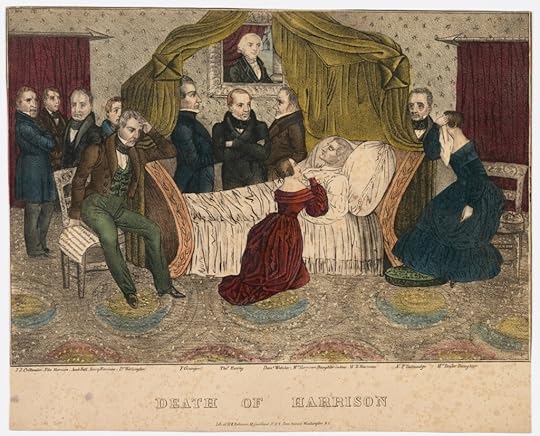 1841 Creator: Henry Robinson Lithograph.
1841 Creator: Henry Robinson Lithograph.National Portrait Gallery, Smithsonian Institution
In 1801, William Harrison took the helm as governor of the newly established Indiana Territory. Driven by ambitions of westward expansion, he soon found himself at odds with Tecumseh and the Native coalition that had formed to resist American encroachment. Nearly four decades later, Harrison claimed victory in 1840.
Harrison took office, though his tenure would prove fleeting. Standing hatless and coatless in the bitter March air, he delivered the longest inaugural address in American history- a two-hour oration that would cost him dearly. The chill that settled in his bones soon manifested into pneumonia which killed him one month after his inauguration.
He is still the shortest-serving U.S. president and considered the first victim of the Tecumseh curse.
Abraham Lincoln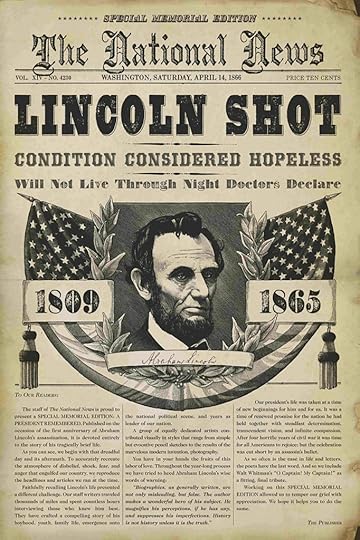 April 14, 1865.Library of Congress / Reuters
April 14, 1865.Library of Congress / ReutersActor and Confederate sympathizer John Wilkes Booth assassinated President Abraham Lincoln at Ford’s Theater on April 14, 1865- a tragedy etched into American consciousness. Lincoln had secured his second term in 1864, however he initially won the presidency in 1860. This initial election date places him squarely within the pattern of the curse.
The bullet to Lincoln’s skull proved fatal within nine hours, while Wilkes and his fellow plotters fled into the night. That same evening, William Henry Seward, Lincoln’s secretary of state, survived a coordinated assault on his life. Authorities determined that Booth, Powell (who attacked Seward), and at least three others had conspired to decapitate the Union government—their vengeance for the South’s defeat. Justice came swiftly; each conspirator met their end at the gallows or before a firing squad, Booth included.
James Garfield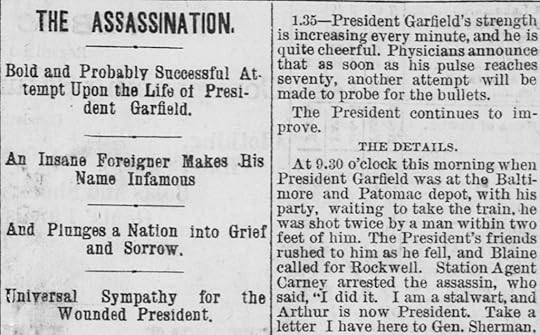 July 3, 1881 The Salt Lake Herald, Chronicling America: Historic American Newspapers.
July 3, 1881 The Salt Lake Herald, Chronicling America: Historic American Newspapers.On July 2, 1881, President Garfield (elected in 1880) strode through the Baltimore and Potomac train station, anticipating a restful holiday at the Jersey shore. The bustling crowd parted for the president until Charles Guiteau emerged from the travelers and fired twice. The fatal bullet tore through Garfield’s back, embedding itself in his abdomen where it would remain.
For two months, Garfield clung to life. Physicians, their unwashed hands delving into his wound in search of the bullet, subjected him to medical practices now considered barbaric. Infection, stemming both from the initial injury and these crude interventions, ultimately claimed him. After enduring weeks of agony and dramatic weight loss, the president succumbed on September 19.
Guiteau, despite pioneering the insanity defense in a high-profile case, found no mercy from the court—they convicted him and sent him to the gallows the following year.
William McKinleyWhen Leon Czolgosz fired his pistol at President William McKinley during the Pan American Exposition in Buffalo on September 6, 1901, few suspected the wounds would prove fatal. The self-proclaimed anarchist had waited in the receiving line, concealing his weapon beneath a handkerchief, determined to strike a blow against what he viewed as tyrannical government authority. As McKinley extended his hand in greeting, Czolgosz seized his moment.
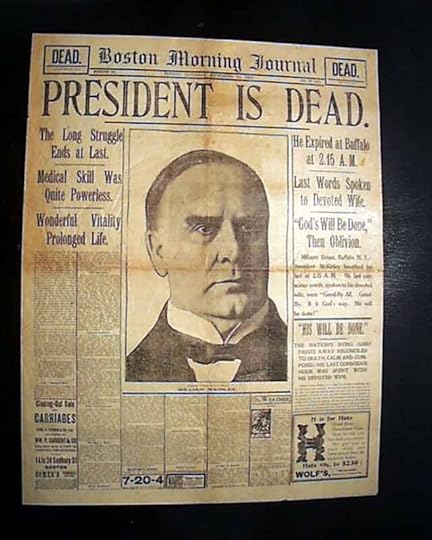 BOSTON MORNING JOURNAL, Sept. 14, 1901
BOSTON MORNING JOURNAL, Sept. 14, 1901 Despite his injuries, McKinley remained conscious and implored his security detail to show restraint toward his assailant while medical staff whisked him into an ambulance. Physicians initially believed the president would recover, as the bullet wounds appeared survivable. Unbeknownst to his medical team, however, infection had already begun spreading through the damaged tissue. Gangrene ultimately claimed McKinley’s life on September 14th, cutting short his second term, elected in 1900, after only half a year in office.
Warren Harding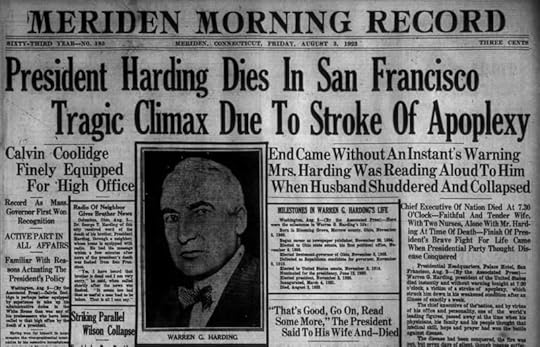 https://www.newspapers.com/paper/record-journal/24595/
https://www.newspapers.com/paper/record-journal/24595/In the weeks before his August 2, 1923 death, Warren Harding’s body was failing him, though he paid little mind to the warning signs. The 29th president, elected in 1920, attributed his fatigue to an arduous cross-country journey, dismissing the cardiac condition that had enlarged his heart. Meanwhile, the presidency itself became another strain on his system—the Teapot Dome scandal unfolding in newspaper headlines while whispers of his mistresses circulated through Washington’s parlors, each crisis another silent blow to his already compromised constitution.
On the evening of August 2, 1923, President Harding reclined in his San Francisco hotel room while Florence Harding, his wife, read aloud from a flattering newspaper article about him. “That’s good, go on,” he murmured—his final words before a violent tremor seized his body. By the time medical help arrived, the president had already passed away. Florence’s subsequent refusal to permit an autopsy fueled speculation about poisoning, though the official cause was listed as “cerebral apoplexy.”
Franklin Roosevelt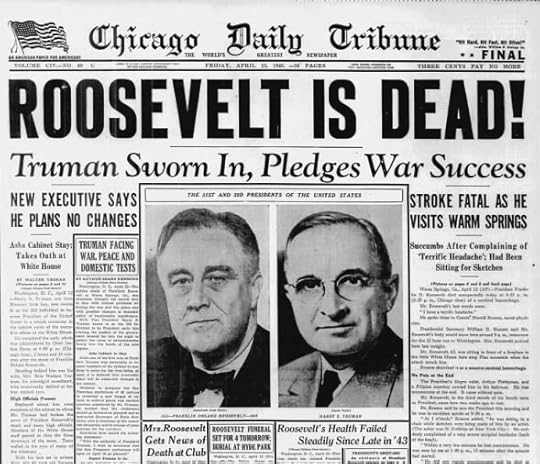 Chicago Daily Tribune
Chicago Daily TribuneThe American public knew well of Franklin Delano Roosevelt’s battle with polio, which had left him unable to stand without leg braces. Yet even as his body failed him, his resolve did not; FDR, elected in 1940 for his third term, navigated both personal hardship and national catastrophe, steering the country from the depths of economic collapse to the crucible of World War II.
While sitting for a portrait at his retreat in Warm Springs on April 12, 1945, Roosevelt complained of a sudden, severe headache. “I have a terrific pain in the back of my head,” were among his final words before he slumped forward, unconscious. The cerebral hemorrhage that struck without warning proved fatal; the President never regained consciousness.
John Kennedy President John F. Kennedy’s remains arrive in Washington, D.C., with Jacqueline and Robert Kennedy following the casket.
President John F. Kennedy’s remains arrive in Washington, D.C., with Jacqueline and Robert Kennedy following the casket.Keystone-France/Gamma-Keystone/Getty Images
Tecumseh’s Curse claimed John F. Kennedy in 1963, when bullets tore through the presidential motorcade in Dallas, creating perhaps the most conspiracy-laden and publicly dissected death of any cursed president.
Decades after the Kennedy assassination, speculation persists. Some wonder if the youthful commander-in-chief—navigating the treacherous waters of racial equality, the global space race, Soviet tensions, and Southeast Asian conflict—fell victim to an ancient hex that had claimed his forebears.
Ripley’s Believe It or NotThe pattern of presidential mortality first caught public attention in 1931 when Ripley’s Believe It or Not, highlighted the eerie likelihood, a theory that gained credibility as subsequent commanders-in-chief met their fates. While modern presidents appear to have escaped this grim tradition by a breath of good luck, the question lingers- has the curse truly been broken?
 Final Thoughts
Final ThoughtsScience has found no evidence that curses are real, yet millions remain convinced of their power through deeply-rooted psychological, cultural, and superstitious beliefs that refuse to die. The terrifying effects people attribute to curses often manifest through the devastating power of self-fulfilling prophecy—where the mere conviction that dark forces have marked you can destroy your life from within, creating the very suffering you feared most.
On the other hand, history has shattered our comfortable delusions, forcing us to confront how the most blood-curdling, mind-shattering impossibilities have repeatedly erupted into our reality, carving themselves into the bedrock of human truth with the force of a jackhammer through concrete.
To believe or not to believe….that is the real question.
Until next time, Keep Reading and Stay Caffeinated.
Subscribe below to stay up to date on myths, legends, mysteries, and the chaos of history.
FacebookThreadsInstagramAmazonXYouTube
If you’re looking for your next favorite read, I invite you to check out my book, The Raven Society. This spellbinding historical fantasy series takes us on a heart-pounding journey through forgotten legends and distorted history. Uncover the chilling secrets of mythology and confront the horrifying truths that transformed myths into monstrous realities. How far will you go to learn the truth?
The Writer and The Librarian (Book 1):
Signed copies at:
https://rlgeerrobbins.com/product/the-writer-and-the-librarian-the-raven-society-book-1/
Explore more blogs here:
October 28, 2025Unveiling the Bilderberg Group: Conspiracy Theories and RealityThe Bilderberg Meeting, founded in 1954, gathers 130 leaders annually under confidentiality, fostering discussions on key geopolitical issues. Critics label it … October 8, 2025Unveiling Skull & Bones: America’s Secret SocietyEach year, fifteen of Yale's most promising seniors receive a tap on the shoulder—an invitation to join Skull and Bones, the … October 5, 2025Unveiling the Knights Templar: Secrets of a Shadowy BrotherhoodThe Knights Templar, a powerful brotherhood formed to protect pilgrims, amassed considerable influence and wealth, leaving an enduring legacy. But do … September 14, 2025Exploring Washington’s Legendary CreaturesLurking in the shadows of Washington’s dense forests and misty coastlines is a distinction many overlook: a bestiary of legendary creatures.Sources:
Deciphered Ancient Tablet Reveals Curse of Greengrocer | Live Science
(PDF) A lexicographical note on a curse tablet from Antioch
Gen. William Henry Harrison, Tecumseh, and the Curse of History – The Dartmouth Review
Report of the Physicians | The American Presidency Project
The post The Haunting Power of Curses Through History appeared first on Chasing History.



